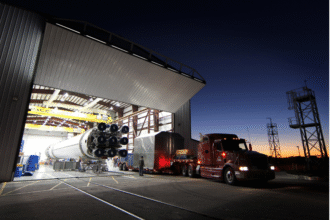In 2025 and beyond, the internet is undergoing a radical transformation, shifting from centralized control to user-owned digital experiences. Welcome to Web3—a decentralized version of the web that is built on blockchain technology, fueled by crypto, and powered by user communities across the globe. As adoption accelerates, businesses, developers, and investors are urgently looking to understand the the decentralized roadmap and where this emerging internet architecture is headed.
This article explores the full decentralized web development roadmap, offering a practical and visionary look at the current state and future of crypto-powred web. From DApp ecosystems to platforms like Ethereum and Solana, and from use cases to global adoption trends—we’ll chart out exactly where Web3 is going and why it matters now more than ever.
Whether you're planning to buy Web3 domains, build your first decentralized app, or just wondering what the Web3 timeline looks like, this guide is your essential resource.
What is Web3 and How Did We Get Here?
To understand the future, we must first reflect on the past. The journey from Web1 to Web3 is marked by a shift from static content to interactive, decentralized ecosystems.
- Web1 (1990s–early 2000s): Read-only websites, limited user interaction.
- Web2 (mid-2000s–2020s): Social networks, user-generated content, but owned by big tech giants.
- Web3 (2020s–future): Decentralized, user-owned, blockchain-powered internet.
So, what is the Web3 timeline? While the term “Web3” was coined in 2014 by Ethereum co-founder Gavin Wood, the real momentum began in 2020, with the explosion of crypto adoption, NFTs, and DApps. From 2025 onwards, we expect mainstream integration in industries, global policy frameworks, and user applications built entirely on decentralized principles.
Core Pillars of Web3: Blockchain, DApps, and Decentralization
At the heart of Web3 lies the trio of blockchain, DApps, and decentralization. Let’s break down each:
1. Blockchain
The backbone of Web3, blockchain offers an immutable, transparent ledger system. It’s the tech that allows for trustless interactions, ownership, and programmable logic through smart contracts.
2. DApp Ecosystem
DApps (Decentralized Applications) run on peer-to-peer blockchain networks rather than centralized servers. They’re transforming finance (Uniswap), social media (Lens Protocol), and content ownership (Audius). This growing DApp ecosystem will be central to tokenized web's next phase.
3. Decentralization
Web3 replaces middlemen with smart contracts and replaces platforms with protocols. No single authority controls your identity, data, or digital assets.
These core elements drive the decentralized web development roadmap, pushing us toward a more democratic and secure internet.
The 2025–2030 Web3 Roadmap: What’s Coming Next?
As we look ahead, the Web3 roadmap between 2025 and 2030 will be shaped by the following developments:
- Decentralized Identity (DID): Users will control their credentials through digital wallets.
- Cross-chain interoperability: Bridges between Ethereum, Solana, and others will be seamless.
- On-chain governance: DAOs will expand beyond crypto projects to manage real-world communities and assets.
- Scalable infrastructure: Layer 2 solutions and zero-knowledge proofs will make tokenized web scalable for billions.
From a decentralized web development point of view, this is the decade when infrastructure becomes invisible—users won’t need to understand how it works to use it.
To better understand how Web3 technologies fit into the broader tech ecosystem, check out our Robotics Tech Roadmap for 2025–2030. It highlights how decentralized systems and automation are converging to shape the industries of tomorrow, much like the principles driving the decentralized we
Buying Into the Future: Should You Buy Web3 Domains?
One of the fastest-growing trends is the ownership of blockchain-based domains like .eth, .crypto, and .dao. Platforms such as Ethereum Name Service (ENS) and Unstoppable Domains allow you to register human-readable domain names that link to your crypto wallet, website, and more.
Why should you buy Web3 domains?
- Secure your digital identity
- Simplify crypto payments (e.g., sidra.eth)
- Gain early access to Web3 reputation systems
- Use it as a decentralized website address
If you’re building a brand or project in the decentralized world, owning a Web3 domain is as important as buying a dot-com was in the 1990s.
Web3 Use Cases by Industry
The Web3 roadmap isn't limited to crypto speculation—it is reshaping industries:
1. Finance (DeFi)
Platforms like Aave and Curve allow users to lend, borrow, and earn interest—without banks.
2. Entertainment and NFTs
Decentralized technology powers platforms like OpenSea, allowing artists to tokenize and monetize their digital work.
3. Supply Chain
Blockchain enables transparent tracking in global logistics—especially useful in food, pharma, and fashion.
4. Governance
DAOs (Decentralized Autonomous Organizations) are forming new governance models that work transparently and efficiently, without centralized boards or executives.
5. Social Media
Decentralized platforms such as Lens Protocol or Farcaster allow creators to control their content and monetize directly.
Each of these use cases ties into the DApp ecosystem, built on platforms like Ethereum and Solana, and represents key verticals in the broader Web3 roadmap.
Major Platforms Powering the Decentralized Internet
No roadmap is complete without highlighting the key platforms shaping the future of this digital revolution:
- Ethereum
A pioneer in smart contracts, powering most NFTs and decentralized apps, backed by a vast developer ecosystem. - Solana
Known for high-speed, low-cost transactions, it's a favorite for blockchain gaming and NFT projects. - Polkadot & Cosmos
Focused on interoperability between networks, with strong governance models that enhance cross-chain collaboration.
These technologies continue to drive innovation across decentralized development, forming the backbone of a more scalable, user-centric Web3 experience.
The Global Perspective: Decentralized Tech Adoption Around the World
The movement toward a decentralized internet isn't limited to any single region—it’s a global transformation. Here's how various parts of the world are embracing this next-gen digital shift:
- India: A booming startup ecosystem is emerging, supported by evolving blockchain policies.
- USA: Home to active developer communities and strong venture capital investment.
- Africa (Nigeria, Kenya): Adoption is accelerating, driven by the need for inclusive financial solutions.
- UAE: Leading with forward-thinking crypto and NFT regulations.
This worldwide momentum reflects a shift toward inclusive, real-world applications of decentralized technologies. As adoption grows, governments are crafting specific policy frameworks and forging new partnerships to stay ahead.
Challenges Ahead for Web3 Developers and Users
The future of decentralized technology is promising—but not without challenges.
- Scalability: Ethereum gas fees and network congestion still exist.
- Onboarding: Wallet setup and security are intimidating for new users.
- Interoperability: Fragmented ecosystems make cross-chain use difficult.
- Regulation: Legal gray zones for crypto and token-based governance.
- Developer tools: Still evolving compared to mature Web2 stacks.
Still, the momentum is clear, and as tooling improves, the decentralized web development roadmap will become smoother and more user-centric.
Conclusion
So, where are we headed?
We are on a transformative path to an open, user-controlled internet where value flows freely and transparently. The Web3 roadmap isn’t just a trend—it’s the foundational shift that will define the next generation of the web.
Whether you're a developer building on Ethereum or Solana, an investor looking to buy crypto-powered webdomains, or a curious user exploring the next frontier—you’re part of a global movement redefining how we interact, create, and own digital value.
It’s time to move beyond platforms and toward protocols, beyond users and toward communities. Welcome to the future of the internet.







